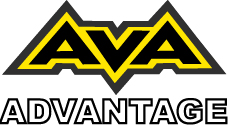Which modification will work best for me?
The high/low adjuster is best for fine tuning and works best for
specific conditions such as DH, where once setup you can set-it and
forget. The CTD lever modification is best where you need to change
the setup on the fly from pedal to trail and dh.
The high/low is infinitely better to tune where as the CTD only
changes the low speed bleed and we have to preset the internal high
speed valving to a compromise.
We are also coming out with a 3rd version where the lever will adjust
the low speed threshold, or pressure on a poppet valve that produces
a firmer feel with HSB blow of capability thus improving pedaling
and mid stroke support without the harshness of a fixed low speed
needle orifice. This is similar to our Float and Monarch set-ups with
the SSD/HSB system.
I am not the best about remembering switching the CTD
lever on and
off and sometimes I forget to change it. If I leave it in trail, on
the
descents I notice sometimes that on some hard, high speed hits the
rear
shock seems really hard/spiky…almost like the shock is too firm.
After
reading about your shock tune, you might be able to help with this?
Our current SSD CTD lever system conversion removes the harsh feel
in the
trail positions and makes the climb position feel much better on bumps.
This
will fix most of you issues with the shock. We are going to offer
similar
modification to the lever system that removes the low speed bleed
system and
creates a low speed threshold system to prevent wallowing and add
an
adjustable threshold to the lever adjustment. This will be available
later
this spring. But based on what you are doing, our current mods will
fix your
issues, the later will improve wallowing feel while allowing for compression
blow-off as the bumps increase in size.
So you do not think that the ‘piggy-back reservoir’
style shock has any
advantages over inline versions i.e., Float CTD vs Float X?
The piggyback shocks like the Float X are actually not that much larger
volume,
they have a external nitrogen reservoir and larger compression adjuster
circuits. They use the same size air sleeve piston and in some cases
have a
larger shock shaft that displaces more oil so there is actually less
oil in
the shock to start. The advantage is the heat in the air can portion
does not affect
the IFP pressure as much and the larger compression circuit for more
precise
adjustment features.
I would like to know if the reservoir extension still
available for the FLOAT X?
Sorry the extended reservoir is currently out of stock. It was mainly
used for 2.75-3 inch stroke VanRc’s and now we are not doing
as many of these shocks. The Float X conversions are generally 2.25
and 2.5 stroke and they do not require the extended reservoir so we
have not restocked. The 3 inch stroke Float X does not require one
but would improve the over heating a bit when doing extend DH runs.
Should I upgrade by Float CTD to a Float X?
We have developed a fix for the Float CTD/RP23 shock and the modifications
are well worth $179. This is the most cost effective solution to your
shock issues. Buying a Float X or Monarch Plus is only a marginal
improvement to the mods we do to the Float CTD. The stock performance
of the Float X is ok in the descend mode but wallows and feels to
harsh in the trail positions on high speed squared edged hits, but
can be improved with our mods, but if you spend $550 for the shock
and then send it to us an pay another $300 to get it to work only
slightly better than the original
Float CTD, then I would say it is not worth it.The Monarch Plus is
slightly better in stock form, and our mods improve the low speed
compression performance, this might be a better choice due to the
overall cost of the shock and mods are less. Still your best option
is to have the Float CTD modified by us.
If I had my DHX air shock serviced by you would it be
similar/equal to the new Float X?
Our modifications make the DHX air works similar to the mods we do
to the
Float X, the biggest difference is the adjustment features that are
available after the mods. The lever style DHX will only have two adjustment
positions, the Float X CTD will have 5 positions, or infinite adjustment
with our High/Low adjuster option. For Enduro/all mountain riding
the lever
system with two positions maybe enough, one position for dh and the
other
for pedaling.


![]()

